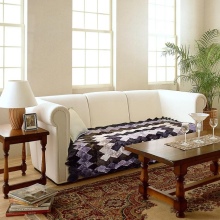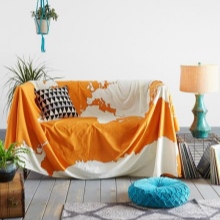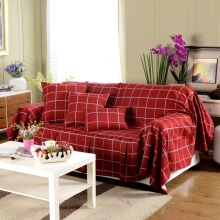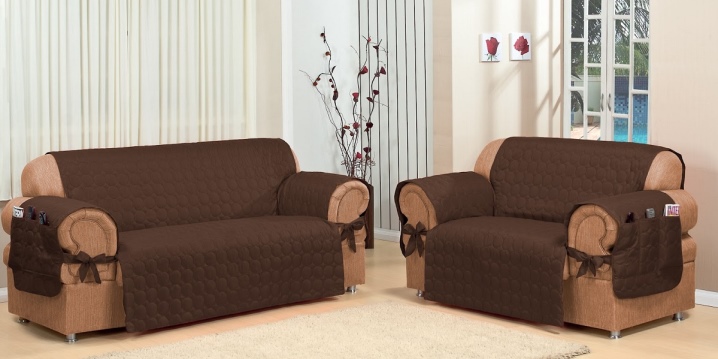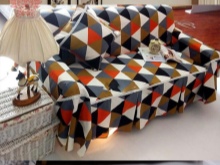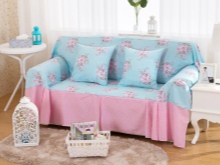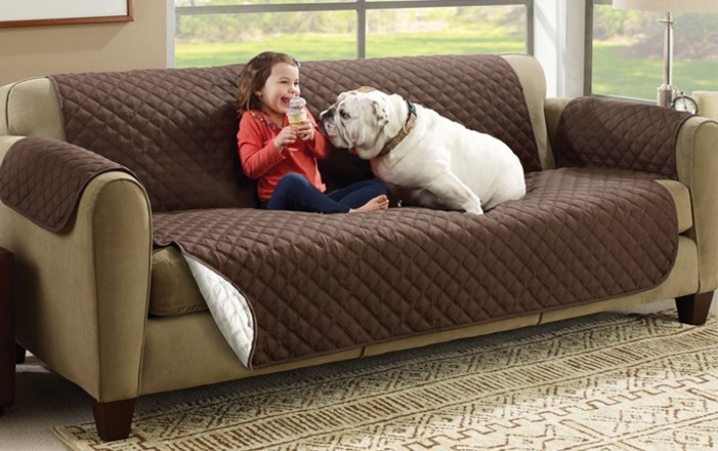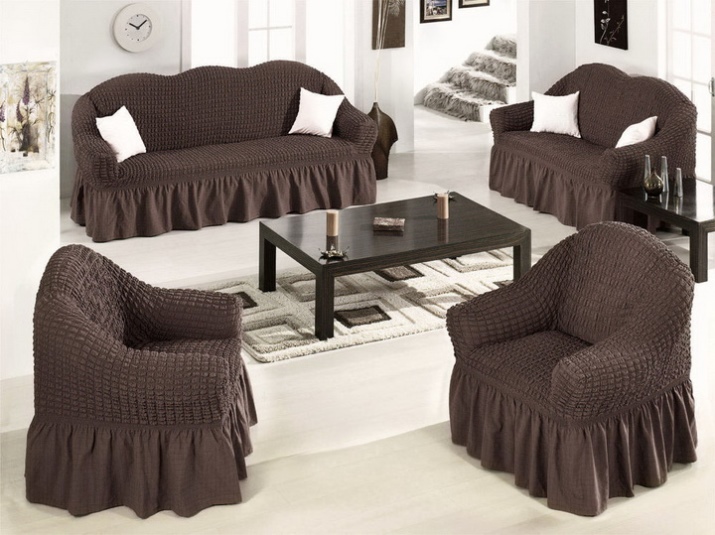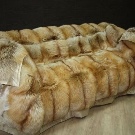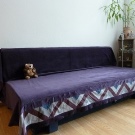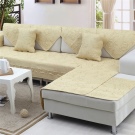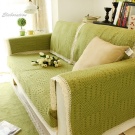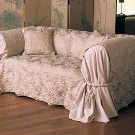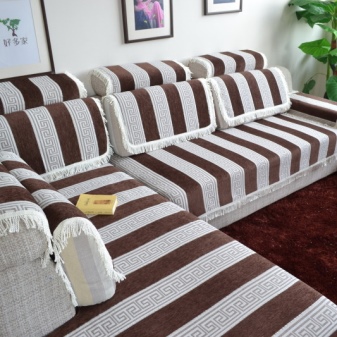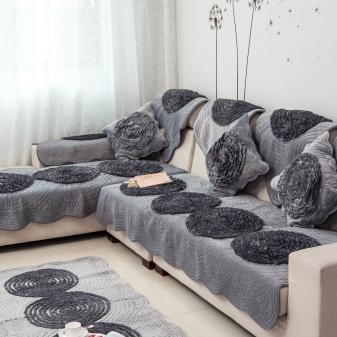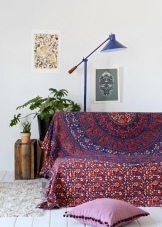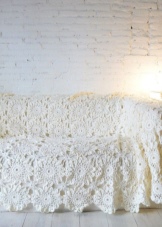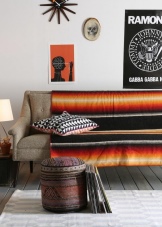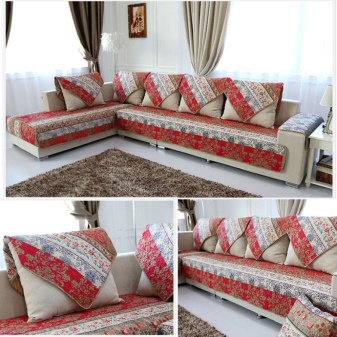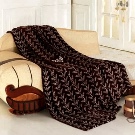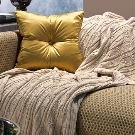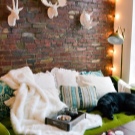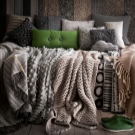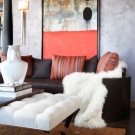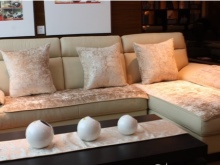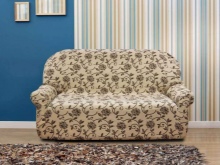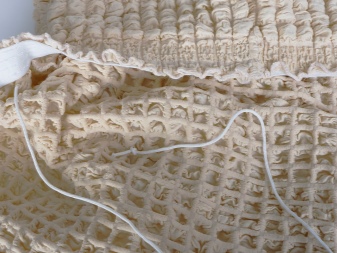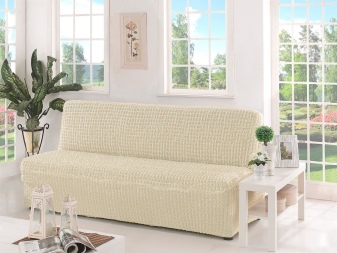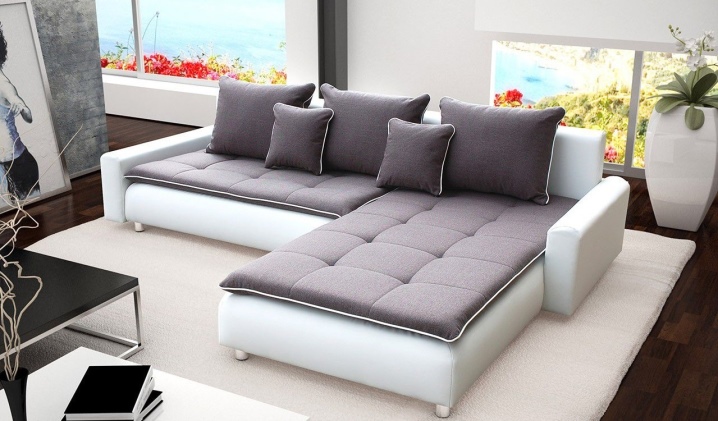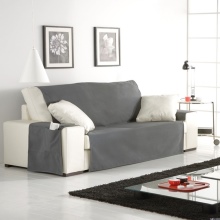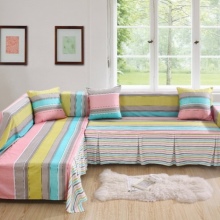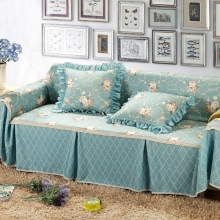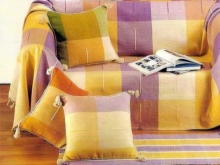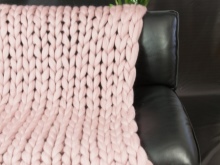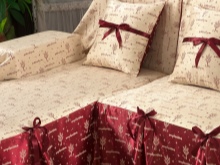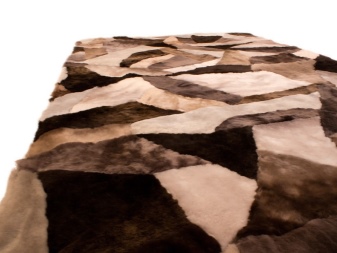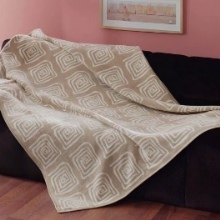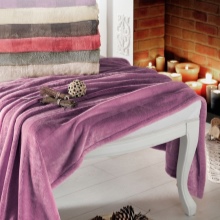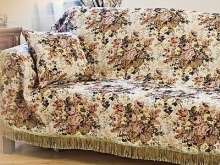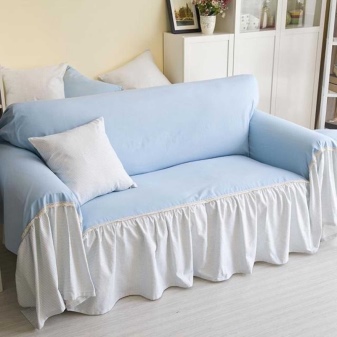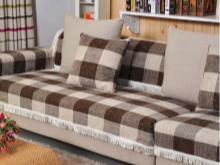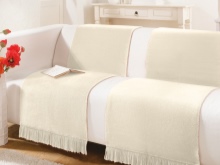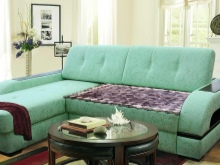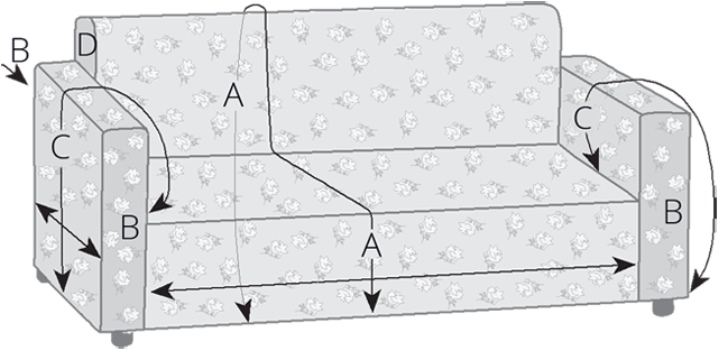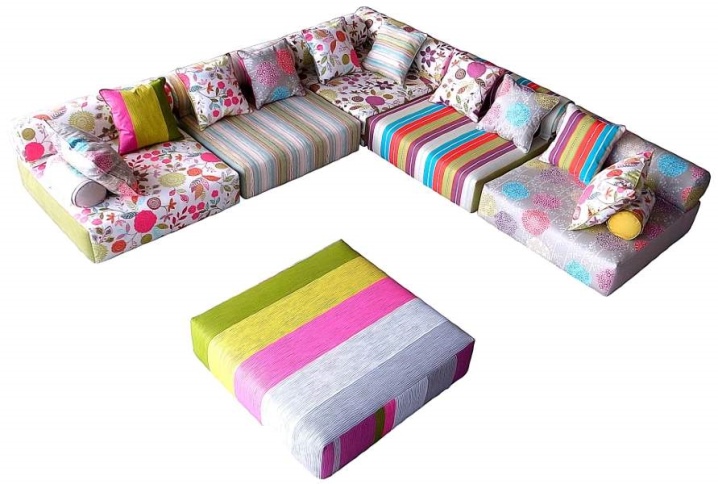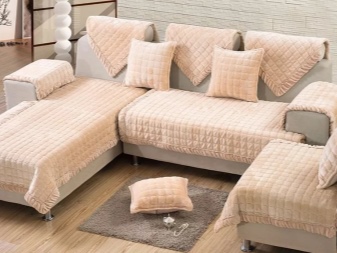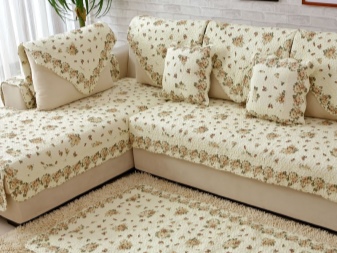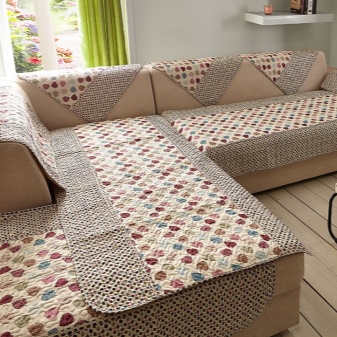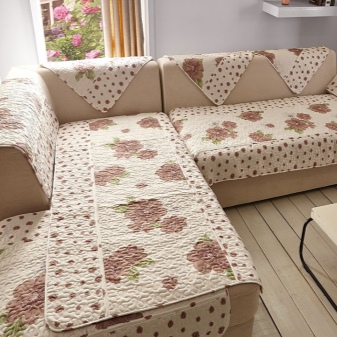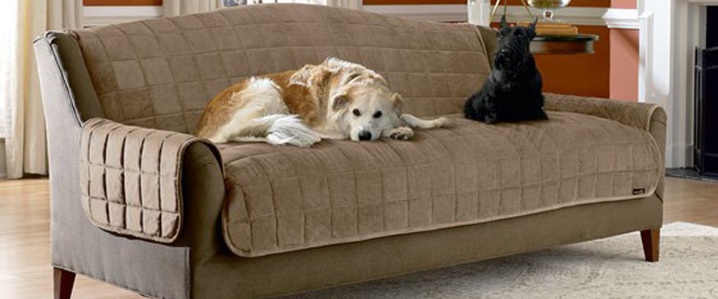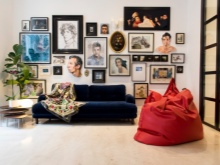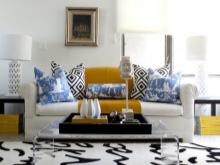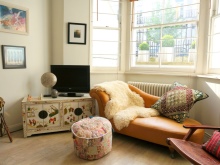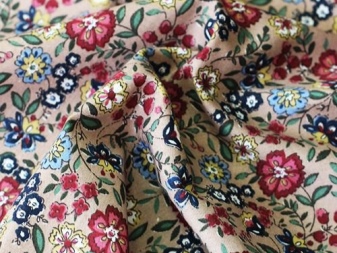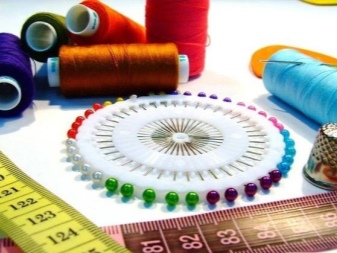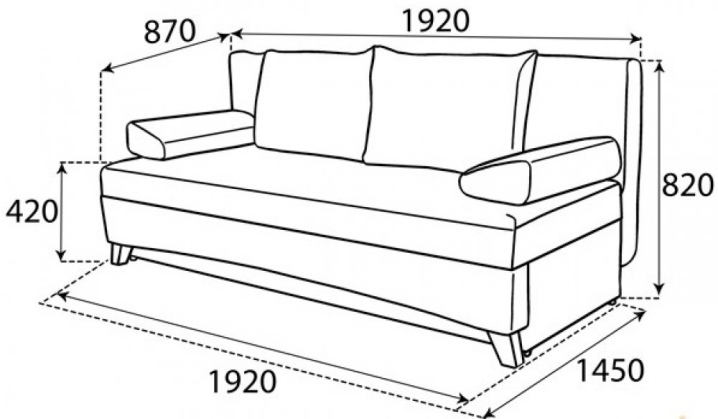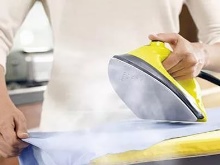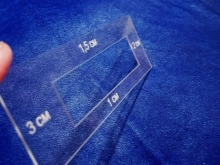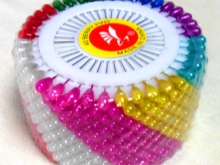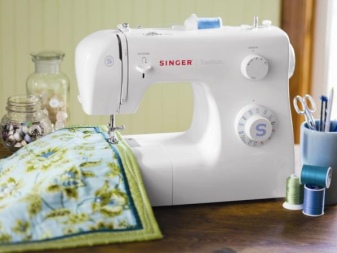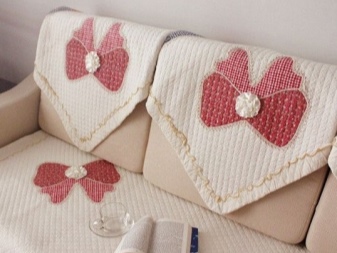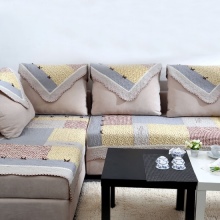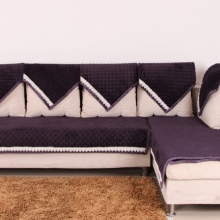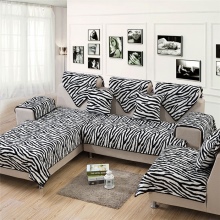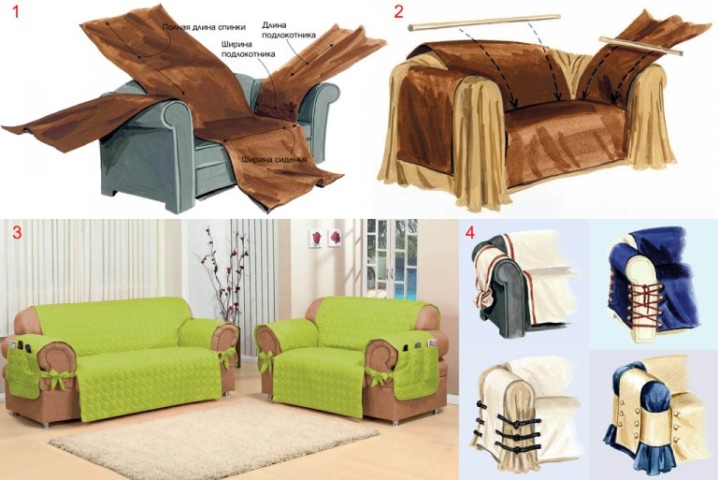Cushions on the sofa
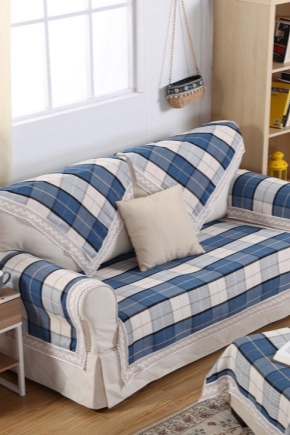
Upholstered furniture is in every home. In addition to the main purpose, the sofa creates a special atmosphere of home comfort. However, like any thing, it needs careful handling. Like it or not - you can not do without a cape on the sofa. Today, this accessory is a favorite theme in design, it is in great demand and has several advantages.
Features and benefits
The cape on the sofa is a universal accessory of upholstered furniture. Today it is called a cover, a veil, a rug, and it has not one, but several purposes. This is not just a bright canvas of material of different texture, which is thrown on the sofa, it is part of the interior, which is selected according to the style of the room and has a number of useful functions.
The main tasks of the sofa cape include:
- protection of furniture from dirt, dust and moisture, which appears even with the most careful and careful operation (in this case, the cape is the second “skin” of the sofa);
- protection of upholstery from abrasion, fading and mechanical damage (preservation of the attractiveness of color, pattern, as well as preventing the appearance of scratches, holes, cuts, hooks, burns from cigarettes, etc.);
- warming the seat and back in order to add comfort (a cape makes the seat surface warmer and softer, which is pleasant for the body and disposes to the most comfortable rest);
- creating an atmosphere of home comfort - with such an accessory, any sofa looks completely different, harmoniously fitting into any style of the room;
- decorating the sofa, design decoration of the backrest, armrests and seats.
Whatever the cape on the sofa, it is sure to extend the life of upholstered furniture. In most cases, such covers are perfectly breathable, therefore they prevent the formation of fungus or mold.
Benefits
In addition to the tasks, such accessories differ in several advantages:
- they are always beautiful and decorate any interior, bringing in fresh paint;
- You can buy them at a specialty store, customize them or stitch them yourself at home;
- accessories are not limited in the choice of color, so pick them up to match the interior is easy;
- a rich choice of texture of the material allows you to buy different capes on the sofa, from simple summer options to soft, ivy and winter;
- such covers differ in the different price thanks to what it is possible to get them according to the available budget;
- it can be decorated with various decorations (braid, fringe, buttons, ruffles, ruffles, trimming cords, embroidery, tassels);
- capes are made not only from solid material: thanks to the design and the chosen theme, they can be made in different techniques (for example, patchwork, appliqués, embroidery);
- in addition to woven materials, capes can be made of knitted fabric with different openwork patterns;
- they are easy to clean (possibility of washing when contaminated);
- save money for the purchase of new furniture or repair cover;
- These accessories can cover one part of the sofa or fully back, seat and sidewalls;
- cushions on the sofa are single-cut or composite, in the form of covers;
- Depending on the model, they can be fixed by means of decorative elements (elastic bands, laces, ties, buttons, eyelets, or buttons).
In addition, if you approach the composition of the interior creatively, in addition to the cushions on the sofa, you can make covers for soft pillows. So it will create an atmosphere of comfort, and the cape and pillows will be a single set.
Kinds
Due to different design techniques, there are plenty of options for capes. In addition to the usual canvases in the form of a blanket, there are other types of sofa accessories (plaid, divandeki, covers with elastic). Consider them.
Conventional canvases are more often covered with a rectangular shape, sometimes rounded at the corners (for the convenience of edging). Such capes are considered classic (universal). They can close the seat or backrest separately, and when large, both can be done simultaneously. Sometimes such a canvas is covered completely over the entire sofa, closing its upper part together with the armrests and forming the tails for comfortable seating. For more comfort and longer durability, the cover can have a lining and padding inside.
Vivid representatives of this type are patchwork capescreated from a variety of multi-colored patches. Most often, they are performed in a specific geometric theme, although skilled needlewomen often create true masterpieces in the form of patchwork paintings.
Blankets - another kind of sofa covers. They are universal and, in addition to the main function, can be used as a light blanket. Their shape is rectangular. Unlike textile capes, they do not have a figured edge and finish: the emphasis is on the texture of the material.
Blankets are divided into fur and carpet. The latter are rare today because they have lost their popularity. But fur blankets are in special demand and are considered a manifestation of luxury and aristocracy.
In addition to the rectangular cape, manufacturers produce models in the form of divandek, covers of two or four canvases connected to each other.
An interesting version of the cape are sofa accessories with a rubber band on the edge of the cover. This creates the possibility of perfect fixation on the surface, without folds and creases.
There are many types of capes, they all differ depending on the model of the sofa and can be intended for a straight or corner sofa, as well as on the armrests,which are also subject to mechanical stress during the operation of upholstered furniture. Capes for corner sofas are distinguished by the fact that without fixing, they constantly crawl and thus make the overall look untidy.
Accessories can have an additional effect and be, for example, massage, waterproof or warming. They can buy or make their own hands - sew or tie. In any case, they look stylish and original.
Fabrics
Modern cushions on the sofa are made from a variety of materials. In the production of using natural and artificial textiles with high strength and resistance to deformation, as well as fading of the original color. Such accessories can be made of tapestry, Korean velor "chinchilla", flock, leatherette. However, such textiles are not the only one, so the choice of capes is limitless.
All material options can be divided into:
- textile;
- fur;
- terry;
- knitted
Each of them has its own characteristics.
Fur blanket
The fur blanket is a luxurious and exquisite accessory that transforms any upholstered furniture, gives it a premium look, adds extra volume and becomes more polluted more slowly than other analogues.The only drawback of such a bedspread is a difficult care (it cannot be washed, so you have to clean it in a dry-cleaner). But he can create a feeling of a soft blanket, because the fur is always warm and cozy.
Terry cover
This cape is often made of natural material, so it is breathable, does not cause an allergic reaction of the skin and is suitable for all family members, and especially for children. The cover may have a different processing of the fibers, in terms of softness it is not inferior to the analogue of fur, although not so durable. Often it has a large weight (if the size of the canvas is large).
Furniture Tapestry Plaid
These types of capes are considered the most durable and practical. They are wear-resistant, differ in a variety of textures (from ordinary weaving to inserts finishing fibers), allow you to change the design of the sofa, without departing from the upholstery theme. Tapestry capes are easy to clean from dirt, dust, food debris, and their color remains bright long enough.
Textile capes
Accessories made of silk, satin and satin are among the most elegant. They are distinguished by their low weight, even with large dimensions, are easy to maintain and have a relatively low cost. The disadvantage of textile options is fast wear.Such models wear out faster than others, lose the original brightness of the color, moreover, they do not save the surface of the sofa from moisture, quickly tear, crumple and form clues. These capes need careful operation.
How to choose?
Choosing cushions on the sofa, you must consider the material of the product. So that it blends harmoniously into the existing interior, it is worthwhile to proceed from the type of room (bedroom, kitchen, living room), selecting the color and shade taking into account the tone of the walls and furniture upholstery.
Before you choose a cape for a sofa, you should measure the dimensions of upholstered furniture. It is inappropriate to buy too small or unnecessarily large case, as in that, and in another case, it will not look beautiful. In addition, it is important to take into account the model of the sofa: the capes on the straight, the euro-sofa and the corner version are completely different in cut. It is important to provide and type of bedspread: canvas without armrests or the opposite option. If the model of furniture will be with shelves, it is worth starting from its features.
If the furniture consists of modular units, the ideal choice would be separate covers, worn on each unit.This will add brightness to the sofa, refresh the style of the interior and extend the life of the furniture. Such capes on a white and light sofa are especially relevant.
Ideas in the interior
Capes - an accessory that can change the style of the interior. For example, a light gray sofa can be decorated with beige capes. To make the design not too simple, the seat cover is decorated with a finishing tape on the front side edge and along the edge of the cape. For the back, a cape is made in the form of independent small square-shaped canvases, on the edge of which the taping is repeated. If desired, you can add interior covers for soft pillows.
If the buyer's mood is changeable, you can buy or make your own double-sided cushions on the sofa. So that they fit well into the interior, it is advisable to select colored items with a game of contrasts: for example, colored peas and contrasting upholstery. Such capes can decorate the corner sofa with a concise style, covering most of its area.
An excellent model that will protect the sofa, even from the hair of pets, can be very concise and at the same time interesting.Quilted texture of the material will add a discreet accent to the cape. The canvas is rectangular in shape with added squares on the sides for the armrests - and the cover in the style of minimalism will change any, even the simplest sofa.
So that the product does not merge with the tone of the sofa and fit into the interior of the room, it is better to pick it up in a color different from the tone of the furniture (but not screaming, but muted).
How to sew?
Sewing capes on the sofa is an exciting and creative occupation. It allows you to show imagination and make a whole set of accessories, performing in the same style with a cape decorations for chairs and the floor. It is not difficult to make an exclusive cape with your own hands: for this you will need material, sewing accessories, decorative elements and knowledge of the techniques of experienced craftsmen. In some cases, may not do without the pattern.
Any, even the easiest way to sew, will require the measurement of measurements of the sofa. Measurements are removed from the seat, backrest, armrests. Then cut out a cape, do not forget to add seam allowances.
If the model provides for different decorative elements from the base fabric, the material is taken with a margin.If you want to make not a simple canvas, but a cover, you should add a cape with a side edge of the front.
When making an accessory from textiles, before cutting it, it is necessary to de-fabricate the fabric. The material is ironed with steam so that the fabric, if it shrinks, sat down immediately. This will help eliminate the deformation of the product in the future.
When cutting and tailoring for greater accuracy, use English pins. The seam allowances should not be too small or too large.
Having chosen square capes for each block of the back, they are cut out, they add a lining, fold them face up inwards and grind off, leaving the undeveloped area for eversion. Then the item is turned out, zayuyuzhivaya edge, sew on it finish (if provided by the model). To add strength, you can lay a finishing line around the perimeter of the square.
Approximately on the same principle perform a cape on the seat. However, if the side face of the front is conceived, at first it is attached to the bottom edge of the cloak, then the edges are cut. The armrests perform similarly to the capes of the back.
Such a model is the easiest and even for a beginner. The only thing worth considering when making a cape with a lining is one small nuance: the base and lining are cut out in the same size, and when they are grinded, the edge of the lining should protrude 2 mm beyond the cut of the base material. This is to ensure that the finished form on the basis was not edging lining.
Plain cape
A universal option that does not require much time to perform and conduct measurements, is as follows:
- measure the distance between the armrests, the width of the seat, the front edge of the sofa, the height of the back and the stock allowance (about 20–30 cm are added to the width);
- separately measure the width and the desired length of the armrest;
- textiles edging finishing bake around the perimeter;
- the same is done with two blanks for the sides;
- the cushion on the sofa and the armrests are ironed out.
To make it more durable, you should add a layer of padding polyester, close it with a lining and stitch all three layers, beating their connection with imitation stitches. It remains to make the edge edging - and a stylish cape for the sofa is ready!
You can see more clearly the process of sewing the cover on the sofa in the next video.
